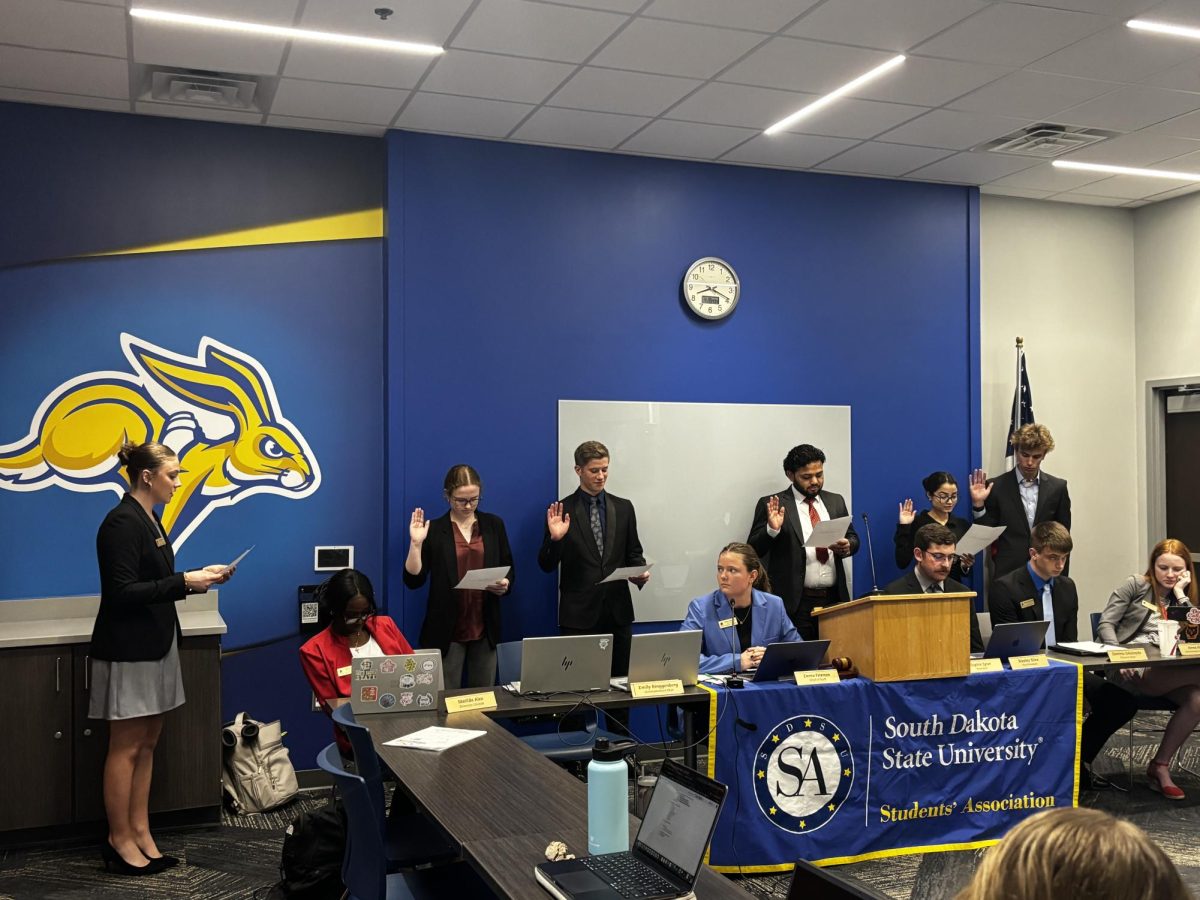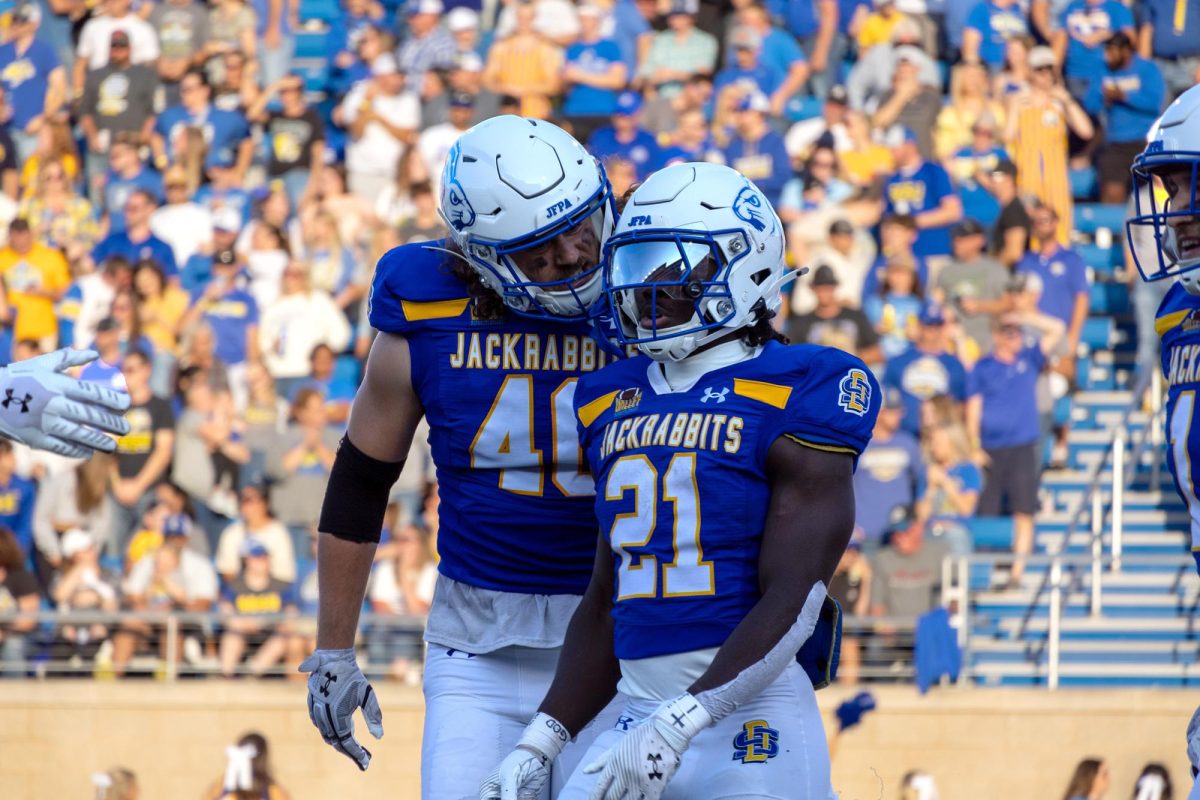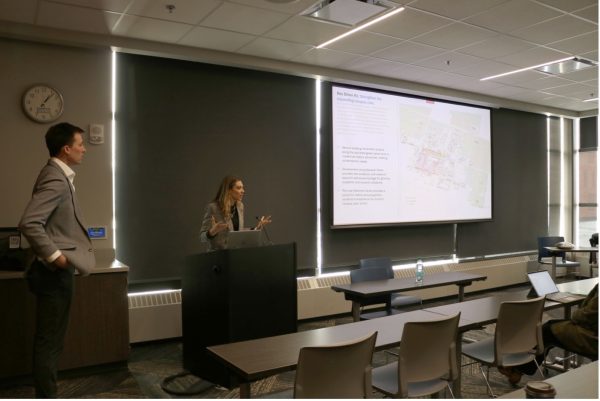Two-day agricultural exposition competition
April 1, 2008
Katrina Sargent
“85 and Still Alive” is the slogan for this spring’s Little International. On April 4 and 5, the Animal Science Arena will be decked out in the traditional red barn, white fence and green wood chips that are characteristic of Little International, or Little “I”.
According to its Web site, “Little International is a two-day agricultural exposition planned, organized and implemented by students at South Dakota State University for the benefit of high school and collegiate students.” Students can compete in several areas including judging, showmanship and fitting.
Little “I” promotes agricultural literacy, salesmanship and selection as well as different agricultural industries, said Crissa Zenk, a senior agronomy major who is this year’s manager.
Little “I” is the largest student-run agricultural exposition in the country, said Jason Diemer, a sophomore ag marketing student. “Anyone can do it; it doesn’t matter if you’ve been involved with livestock,” said Diemer. There is a novice division for those wishing to show animals as well as people who want to try judging.
“The best part of Little “I” is seeing how the passion for ag exhibiting and ag events runs deep in the students who participate and in SDSU as a whole,” said Jill Pesek a senior agriculture education major and member of the executive committee.
Contestants have various amounts of time to work with different animals. Three weeks are given to those working with dairy and beef and one week for those working with hogs, horses and sheep, said Zenk.
Contestants get to choose the type of animal they want to show, but the actual animals each participant works with is chosen by raffle before the competition.
In the ring, they may compete in showmanship or fitting. In showmanship, they are judged on their ability to control the animal with a halter; fitting judges the appearance of the animal. Fitting involves getting the animals washed and ready with hairspray, glue and other means. Zenk compared it to the way people get prepared in an effort to look their best.
Grant Thompson, a junior animal science major, said he has been showing pigs for most of his life. “The swine contest is most challenging because you get the least time to work, and you don’t get to use a halter to lead,” Thompson said.
Cody Sweeter, a sophomore agricultural business major, won beef showmanship last year. “It got intense sometimes. You get four weeks to work with bulls,” said Sweeter. He said to get them ready, they need to be broken or tamed, washed, clipped and groomed.
“I learned a lot from getting involved,” said Sweeter.
Other areas of competition include dairy products judging, floriculture, farm business management, nursery landscape and agriculture products salesmanship.
Other events throughout the weekend include a block and bridle quiz bowl, agronomy and collegiate club exhibits and a silent auction. The event will conclude with a dance at the Swiftel Center at 10 p.m.
There are 200 Little “I” participants on campus apart from the staff, and there will be more than 2,000 high school participants on April 4 from Minnesota, Iowa and South Dakota, said Zenk.
The high school students will compete for individual and team awards, as well as scholarships.
At the collegiate level, participants will compete for a variety of prizes from captain’s chairs to monetary prizes.
“Little International is a great way to see the ag industry at work with its future leaders,” said Zenk. “It is a great way to see some of the most talented students at SDSU.”
Little “I” attracts between 2,500 and 3,000 spectators over the weekend, said Zenk.
There are 101 students on this year’s Little “I” staff who work in a variety of aspects to put the weekend together.
Zenk estimates the budget for Little “I” to be around $35,000. Some of this money comes from the Students’ Association and the rest is raised through corporate sponsorships.
Little “I” began in 1921 and was modeled after the Chicago International Livestock Exposition. It has only been called off three times since then, once for a scarlet fever epidemic in 1926 and two years during World War II.
Area youth and college students can learn a lot by attending Little “I”, said Diemer. “A lot of work goes into producing a real high-quality event.”
“Little ‘I’ is a great opportunity to come out and see the passion and impact of agriculture on society,” said Pesek.
Visit the Little International Web site at http://ars.sdstate.edu/LittleI, or e-mail any questions to sdsu_littlei@yahoo.com.





















